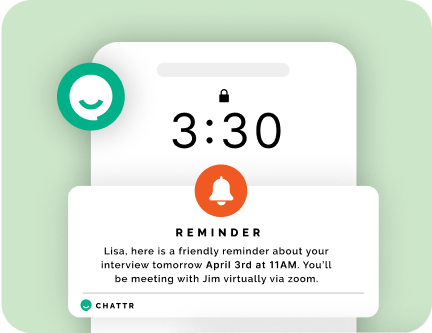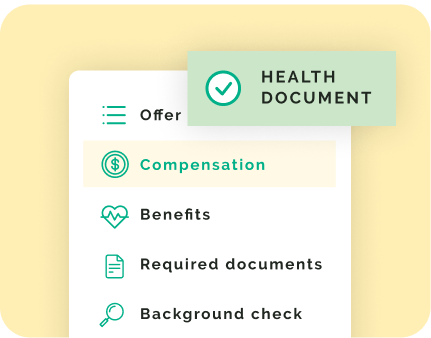When it comes to hiring hourly workers, there are hidden costs that can quickly add up. From interview time and turnover to training costs, these factors can eat into your bottom line if you’re not careful.
Fortunately, you can ensure your hourly workforce works smoothly by focusing on profitable hiring practices. Additionally, integrating technology like Chattr’s conversational AI can further streamline the hiring process.
The cost of time – it can take up to 50 hours to screen a single candidate
Hiring hourly employees can be a time-consuming process. In addition to the initial screening of resumes and applications, employers often have to conduct multiple rounds of interviews, reference checks, and background checks. It can take up to 50 hours to hire a single hourly worker. And that’s just for one position! The cost of time doesn’t just stop at the hiring process. Employers must also account for the training time required to get new hires up to speed. With all of these factors considered, it’s no wonder many businesses outsource their hourly hiring needs (schedule a meeting with a member of our team to learn more about how Chattr is reducing the time to hire by 88%).
The cost of opportunity – not filling the position can have a ripple effect on other parts of the business
When a position is left vacant, it can cause a domino effect throughout the company. Production suffers because no one can complete the tasks at hand. Other employees may have to pick up the slack, leading to frustration and decreased morale. Sometimes, customers may even go to the competition because they are not getting the needed service. The bottom line is that when a company does not take the time to fill a position correctly, it can cost them in more ways than one. The cost of opportunity is just one hidden cost associated with the hourly hiring process – but it is one that businesses should be aware of nonetheless.
The cost of bad hires – a bad hire can mean decreased productivity and morale and may even require termination
The cost of bad hires is often underestimated. A bad hire can decrease productivity, damage morale, and even require termination. The costs associated with these factors can add up quickly, costing a bad hire much higher than initially thought.
Productivity decreases when employees are not a good fit for their position. This can happen when an employee is not trained correctly, is not motivated, or does not have the necessary skills for the job. When productivity decreases, it can have a ripple effect on the entire company. Other employees may have to pick up the slack, leading to burnout. Additionally, customers may be affected if they are not receiving the level of service they expect. These factors can lead to decreased profitability and, ultimately, reduced revenue.
Damage to morale is another hidden cost of bad hires. Employees who are not a good fit for their position can create tension and conflict within the team. This can lead to turnover as employees become disgruntled and leave for greener pastures. Additionally, those who remain may resent the bad hire, leading to decreased morale and motivation. Ultimately, this can impact productivity as well as employee retention.
The cost of terminating a bad hire can also be high. First, there are the direct costs associated with termination, such as severance pay and unemployment benefits. Second, indirect costs are related to losing an employee, such as the need to recruit and train a replacement. Finally, intangible costs are associated with terminating an employee, such as damage to morale and productivity. These factors can add up quickly, costing a bad hire much higher than initially thought.
The cost of recruiting – advertising, screening, interviewing, and onboarding new employees all cost money
It’s no secret that the hourly hiring process can be costly. Between advertising, screening, interviewing, and onboarding new employees, businesses can easily spend thousands of dollars to fill one vacant position. And while the upfront cost may be daunting, it’s important to remember that the alternative—leaving a position unfilled—is often even more costly. An open position not only means lost productivity and revenue but can also lead to increased stress levels for existing employees who are picking up the slack. In other words, the hidden costs of not filling a position can quickly add up. Therefore, while the hourly hiring process may be expensive, it’s often worth the investment.
Businesses can quickly and easily identify qualified candidates by automating the screening process. Chattr’s conversational AI can also help reduce recruiting costs by streamlining the interview process. Chattr’s conversational AI can help businesses find the best possible employees while saving time and money. Don’t hesitate to get in touch with us today if you’re interested in learning more about how Chattr can help your business.















